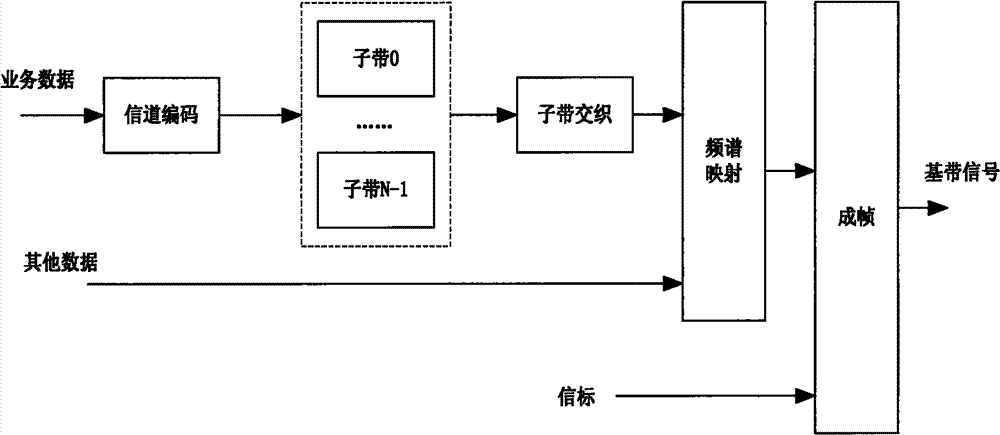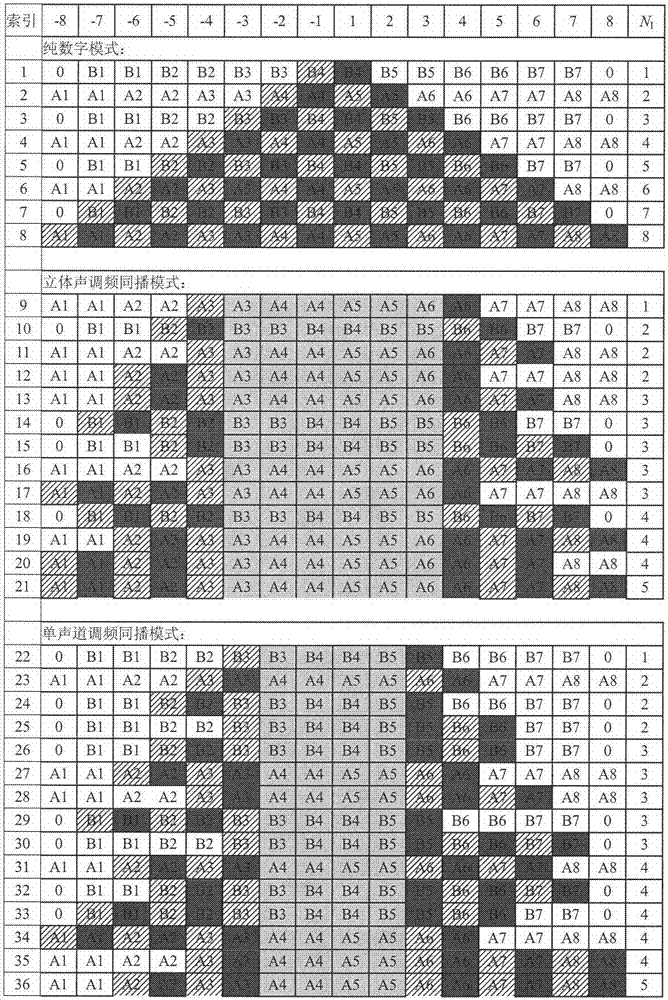Method and device for extending signal bandwidth in digital transmission system
A technology for signal extension and digital transmission, applied in the field of digital information transmission, it can solve the problems of limited bandwidth resources, single data type, and narrow data transmission rate variation range, so as to improve signal bandwidth, improve reliability, and reduce multipath fading. effect of influence
- Summary
- Abstract
- Description
- Claims
- Application Information
AI Technical Summary
Problems solved by technology
Method used
Image
Examples
Embodiment Construction
[0018] Embodiments of the present invention are described in detail below, examples of which are shown in the drawings, wherein the same or similar reference numerals designate the same or similar elements or elements having the same or similar functions throughout. The embodiments described below by referring to the figures are exemplary only for explaining the present invention and should not be construed as limiting the present invention.
[0019] Referring to Figure 1, Figure 1a , Figure 1b Respectively show schematic diagrams of signal processing at the sending end and receiving end in the digital transmission system according to the present invention, which shows the processing process of the method for extending the signal bandwidth, including the following steps at the sending end: Step 1, channel coding the service data According to the spectrum mode used by the system, the coded service data is allocated to one or more subbands specified by the spectrum mode; step ...
PUM
 Login to View More
Login to View More Abstract
Description
Claims
Application Information
 Login to View More
Login to View More - R&D
- Intellectual Property
- Life Sciences
- Materials
- Tech Scout
- Unparalleled Data Quality
- Higher Quality Content
- 60% Fewer Hallucinations
Browse by: Latest US Patents, China's latest patents, Technical Efficacy Thesaurus, Application Domain, Technology Topic, Popular Technical Reports.
© 2025 PatSnap. All rights reserved.Legal|Privacy policy|Modern Slavery Act Transparency Statement|Sitemap|About US| Contact US: help@patsnap.com



